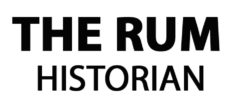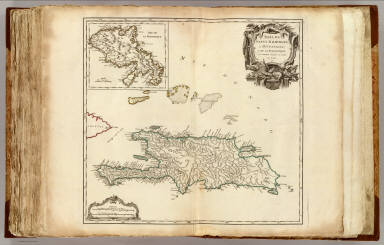In the first article of this series, “SAINT CHRISTOPHE, MARTINICA AND EAU-DE-VIE” , I stated that according to some documents, a commercial production of rum may have started in Saint-Christophe, Martinique and other French islands, a few years before it did in Barbados.
In the second article, “ADAM’S WILL”, I maintained that in order to understand historic documents properly it is not sufficient to just read them. We have to contextualize them, that is, put them in their proper historical period. I also stated that in the 1620s and 1630s, when the French began to settle in the Caribbean, they knew America and its resources well. In particular, they had a long experience of travelling to and trading with Brazil, a great producer of sugar and where, at least from the beginning of 1600s, rum was produced too.
Now I want to delve further into another part of the historic context: when the French began to settle in the Caribbean, were they already familiar with commercial alcoholic distillation?
As far as I know, a scholarly work dedicated to the full history of alcoholic distillation in France does not exist and, as often when doing research on rum, distillation and alcohol, we have to look for evidence by perusing different and sparse sources. Having said this, let’s start from the very beginning.
“Between about 1270 and 1285 news began to spread from Bologna through northern Italy and beyond concerning a marvelous new panacea called aqua vitae [water of life]”, C. Anne Wilson writes in her interesting and innovative book, “WATER OF LIFE. A History of Wine-Distilling and Spirits 500 BC – AD 2000” 2006. And later she writes “In the Archives de l’Artois, dating from 1308, an entry refers to burning water prepared on behalf of the daughters of the Countess Mahaut. It is listed among items for which payments are due from the Count of Artois, and it records:’20 sous, 10 deniers for wine which Master Girard bought to make Ieaue ardent …to care for our damoiselles.” Probably this is the earliest evidence of alcoholic distillation in France.
Moreover, we know that at the court of the Popes in Avignon, scholars addressed the question of preserving health with water of life in the early decades of the 14th century, and that in 1330 Pope John 22nd had an alembic made to produce it.
This early production and consumption was, of course, for medical purposes. The passage to pleasure consumption and commercial production occurred first in Italy, at the beginning of 1400 at the latest, as we can learn from the “Libreto de Aqua Ardente”- “Booklet of Burning Water” – written by Michele Savonarola in Ferrara, Italy between 1444 and 1450, possibly the first treatise entirely dedicated to water of life. There is no reason to think that in France it would happen much later. Actually, we know of the existence of a true professional corporation of distillers (ayga ardenterius) in Provence as early as 1411.
A few decades later, however, partly thanks to the invention of the printing press, works dedicated to water of life and to alcoholic distillation sprang up everywhere, especially in Italy and in Germany, and its production and consumption spread throughout Europe. I have not found further evidence in the France of 1400s, but probably simply because I have not looked hard enough.
In 1514, the French King Louis XII allowed the vinegar manufacturers’ guild to distill spirits and, in 1537, King Francis I encouraged the same among wholesale grocers. By the mid-sixteenth century, French distillers organized themselves into a separate guild, and distilled wine (brandy) soon became a beverage of more general use.
At the beginning of the 1500s, in Florence, the Fonderia Medicea di Palazzo Pitti (the Medicis’ Foundry at Pitti Palace) was at the leading edge of the production of spirits of many kinds. When Caterina de’ Medici in 1533 married the future King Henry II in Paris – the French discovered the virtues of Florentine liqueurs, which in Florence at the time were already served at the end of a meal, and in particular of “rosoglio”. During Caterina’s long Regency, the custom of drinking liqueurs spread rapidly in France.
According to G. Comet in “L’eau-de-vie, naissance et premiers pas” in La Rochelle, in 1559, an official declared that “le vin est médiocre, mais il est excellent pour faire de l’eau-de-vie’ et les bateux sur Londres emportent tonneaux de vin et battiques d’eau-de-vie.” That means, more or less, “the wine is mediocre, but it is excellent for making water of life and the vessels to London import tuns of wine and barriques of water of life”
Let’s read now some sentences from the fundamental book of Henriette de Bruyn Kops: “A SPIRITED EXCHANGE The Wine and Brandy Trade between France and the Dutch Republic in its Atlantic Framework, 1600-1650” (2007).
In that period, Holland was the most modern and technologically advanced country all over Europe. Their merchant fleet was by far the largest in the world, Amsterdam was the center of the world’s trade and finance and the Dutch were the pioneers of commercial distillation on a large scale.
“Dutch brandy consumption has been documented as early as 1536, when tavern keepers were prohibited from selling it for consumption off the premises. … the States of Holland started taxing ‘all fired wines’ in 1583, a sign that brandewijn consumption was high enough to warrant the revenuers’ attention. By 1588, Amsterdam, Rotterdam, Hoorn and Enkhuizen had resident distillers. The Dutch did not confine their operations to the distilling of wine into proper brandy, but knew how to distill ‘jenever’ [gin] from a variety of raw materials, including beer, malt, wheat and barley. The step from brewing beer from grains to distilling wine, beer or grain into brandy was a natural one, and Dutch brewers quickly embraced the brandewijn industry. Rotterdam’s distillers produced enough brandy by 1604 that they had a surplus that could be exported.”
And from the Netherlands we have a lot of indisputable evidence about distillation and alcohol consumption. “By the mid-1580s, the brokers’ guild had started to publish the commodity prices on the Amsterdam Bourse on a weekly basis. These ‘Pryscouranten’ have thus far been used in Dutch price history, but … they also allow us to discern early modern consumer preferences. The sole sixteenth century survivor of the series [a single week in 1586] does not list any wines, but various French and Spanish wines and brandies were listed on a regular basis starting with the one remaining list of the first decade of the seventeenth century, dating 1609.”
The trade with France was very important for the Dutch economy. “French brandy was listed from 1609 onwards, initially under the generic heading of ‘French’ brandy, but starting with the list of 1630 the French brandies were sold under their regional label. Brandy from Bordeaux and the Cognac area made the list in 1630, followed by those from Nantes from 25 April 1633 onwards.”
“In the early part of the seventeenth century, a growing and increasingly well-to-do population plus the sailors of the mercantile and naval fleets expanded the Dutch consumer base and spurred the demand for wines and brandies from France. Specific conditions in local viticulture combined with technology imported by Dutch entrepreneurs – and especially those of Rotterdam – boasted the production of brandy in the region around Nantes and changed the nature of its alcohol supply.”
“The region around Nantes itself produced inferior wines that most contemporaries considered to be undrinkable. Sometime before 1600, Dutch entrepreneurs figured out that this poor white wine was the perfect and cheap raw material for brandy-liquor distilled from wine.. … Anthonie Casteleyn [Quisthlin or Chastelin in the French records] from Dordrecht must have arrived in Nantes well before 1609. That year the holder of a royal brandy monopoly complained about Casteleyn’s five stills near the bridge at ‘Pillerny’, his illegal export of 40 barrels of brandy to La Rochelle and about his Dutch assistant, a barrel cooper named Adrien.”
“Nantes had always been a transshipment point for the quality wines coming down the upper Loire valley from Anjou and Orleans, but it is significant that the first mention of Nantes as a center of Dutch efforts to produce exportable alcohol concerns brandy (eau-de-vie) instead of wines. The wines of the lower Loire area were deemed barely fit for human consumption but they made fine brandy. The Dutch introduced and commercialized the technology which distilled the Nantes wines into excellent brandy, a highly drinkable and thus marketable product. Some of this ‘gevuerde wijn’ [fired wine] was in turn used to fortify weak wines so that they lasted longer.”
“The French government recognized this development as early as 1605 when King Henri IV granted Isaac Bernard, one of his court officials, a ten-year monopoly on the transport of brandies from Nantes destined for export.”
In 1631, Nantes exported 1,382 tons of brandy and in the same year Dutch entrepreneurs shipped to Nantes 235 stills. Other 10 stills were imported by other entrepreneurs. Total: 245 brandy stills from the Netherlands in that year alone, transported by 29 ships. This is an early example of delocalization. “When Dutch merchants imported 235 brandy stills into Nantes in 1631, they did so in order to control the production of brandy at the source of the raw material, to achieve a vertical integration of the brandy trade, to reduce their costs and maximize their profit. In the process they transformed Nantes’ regional economy.” Thirty-three Dutch and seven French vessels participated in the brandy trade by either importing stills or exporting the finished product.
It is important to emphasize that Nantes was only one of the French ports from which French brandy was exported, and the Dutch were not the only importers. For instance, a scholar has estimated that in 1628-29 Bayonne and Saint Jean-de-Luz exported about 250 tons of brandy and in the mid-1640s the Dutch alone exported about 3.000 oxheads of brandy from Bordeaux, where an oxhead was about 200/250 liters. More, “In 1631, the city of Hamburg imported 3,801 tons of wine plus 242 tons of brandy from Nantes on 87 ships. All the brandy was imported by five French ships: 119 tons of brandy from Nantes, 88 tons from the upstream Loire region, plus another 35 tons of brandy from Anjou for a total of 242 tons.”
This is enough. In conclusion, in the 1620s and 1630s, when the French settled in the Caribbean, they already had a long and successful experience of producing and exporting eau-de-vie de vin, water of life from wine, in a large commercial scale. Or, to say it in another way, in the 1620s and 1630s the business of distilling had been well established in France for some time.
Marco Pierini
PS: I published this article on January 2019 in the “Got Rum?” magazine. If you want to read my articles and to be constantly updated about the rum world, visit www.gotrum.com


